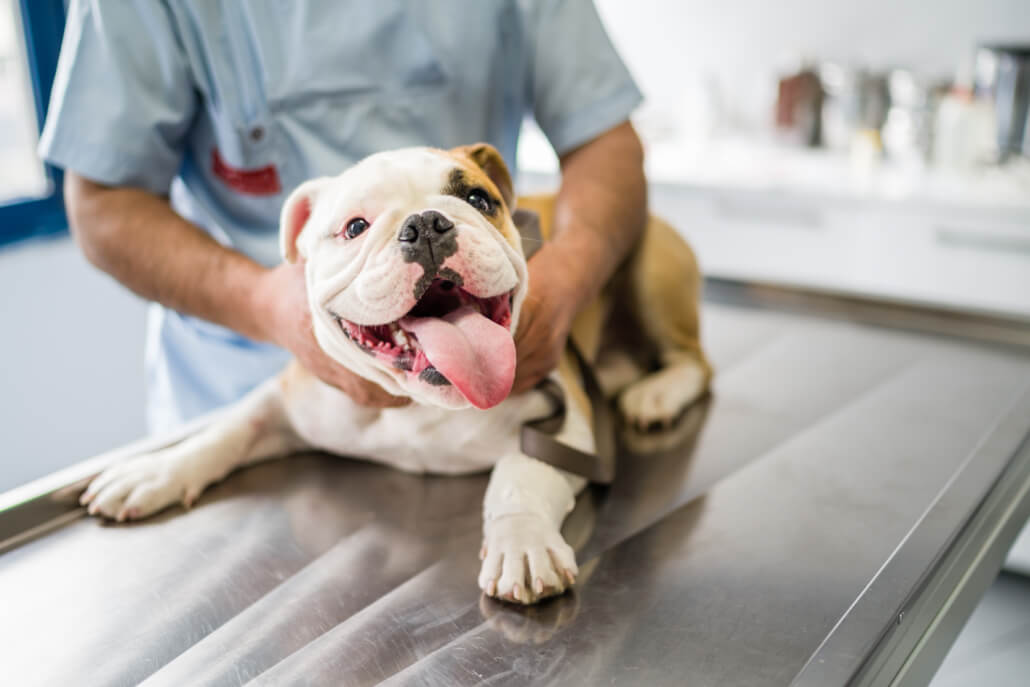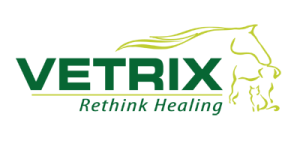Just as glaucoma is a primary cause of vision loss in humans, eye disease can be just as big of a threat to canines. This condition can come about due to genetic makeup or other causes but is almost always a progressive problem that should involve careful management by a veterinary ophthalmologist.
What causes glaucoma, how do symptoms present, and how do you treat glaucoma in dogs? Let’s take a closer look.
What Is Glaucoma?
Glaucoma is a progressive eye disease that is characterized by increased intraocular pressure (IOP) within the eye. IOP of the eye is maintained when the aqueous humor (eye fluid) that contains nutrients and vital oxygen is properly drained after production and use by the eye structures. This fluid is normally drained away from the eye after serving its purpose through an area between the cornea and iris known as the anterior chamber.
Dogs with glaucoma have a problem with the excess fluid draining from the eye, which generates undue pressure within the eye. This pressure can lead to damage or degeneration of both the optic nerve and retina, which can lead to total blindness over time.
There are actually two types of glaucoma: primary and secondary. Eye disease affects around 1.7 percent of the total dog population in North America.
What Causes Dog Glaucoma?
The main cause of glaucoma is the lack of aqueous fluid drainage that creates high intraocular pressure on the optic nerve, but the disease itself may have further root causes. Unlike humans, glaucoma among canines has not been found to be caused by an overproduction of aqueous fluid.
Primary Glaucoma
Primary glaucoma is usually rooted in genetics; there may be an abnormal anatomical feature that impedes the fluid drainage process. Specific breeds are more prone to glaucoma than others, such as:
- Poodles
- Beagles
- Basset Hounds
- Cocker Spaniels
- Terrier Breeds
Primary glaucoma most often shows up in one eye initially but does usually affect both of the dog’s eyes.
Primary closed-angle glaucoma, primary narrow-angle, and primary closed angle are all variations that can be possible in dogs.
Secondary Glaucoma
Secondary glaucoma occurs due to heightened intraocular pressure after an illness or injury that affects the eye and changes normal intraocular pressure. Some of the most common causes include:
- Chronic uveitis – inflammation or infection of the eye that causes drainage blockage
- Anterior lens luxation – the lens slips forward and causes drainage blockage
- Ocular or facial tumors – forces a blockage that impedes proper drainage
- Corneal ulceration – a ruptured lens creates a blockage due to inflammation and scar tissue
- Intraocular bleeding – may cause a blood clot to form that creates a blockage
The secondary form is most common in canines, and can also affect certain dog breeds that have more protruding eyes.
Secondary closed-angle glaucoma and secondary open-angle glaucoma are possible further classifications in this form of glaucoma.
The Difference Between Acute and Chronic Glaucoma
Glaucoma can also be either acute glaucoma or chronic glaucoma, and vets do usually divide the signs into one or the other during treatment. Acute glaucoma is considered an emergency situation in veterinary ophthalmology, while chronic glaucoma is more of a long-term problem. Chronic forms of the disease usually present symptoms slowly over time instead of suddenly.
An acute situation may be caused by an injury or situation that drastically causes increased pressure over the course of a few hours. In some cases, a dog’s vision is salvageable if promptly treated by a veterinary ophthalmologist, but only about 50 percent of dogs retain their visual capacity.
Symptoms of Canine Glaucoma
Glaucoma symptoms for dogs may come on slowly or suddenly, depending on whether the situation is acute or chronic and primary or secondary glaucoma. Some of the telltale symptoms include:
- Watery discharge from the eye
- Physically visible changes to the eyeball, such as bulging or red and engorged sclera
- Signs of eye pain, such as holding the eye closed, rubbing at the eye, or refusing to allow you to touch that side of the head
- Lethargy, unresponsiveness, malaise, loss of appetite
- Dilated pupil in the affected eye
- Loss of vision, either gradual or suddenly
Symptoms with the eye disease can be present for some time before the owner realizes there is an issue, but in acute cases, a dog can actually experience total vision loss in just a few hours.
Diffuse corneal edema (swelling of the cornea) can also be a sign of glaucoma, even though the condition can be related to other conditions like endothelial dystrophy.
Treatment for Canine Glaucoma
Most treatments for canine glaucoma focus on two goals: normalizing IOP to preserve or regain vision and alleviating pain by controlling IOP if vision is permanently lost. Good results can be achieved with a proper diagnosis and advanced treatments as part of a comprehensive care plan for the long term.
There are many treatments for canine glaucoma, but not all represent a higher level of care for maximized veterinarian services. Both medicinal and surgical treatment options may be necessary for optimal outcomes in some cases.
Medicinal Treatment for Dogs with Glaucoma
Medical therapy is most often a medicinal effort with either topical or systematic solutions. Below are a few often used for medical treatment in the earlier stages after the diagnosis.
Prostaglandin Analogs
As a topical therapy, prostaglandin analogs have been shown to lower IOP by increasing aqueous humor outflow. This presents a state of miosis and may physically open the iridocorneal angle for improved flow.
Osmotic Diuretics
This treatment is used primarily for cases of acute glaucoma where vision can be improved. For many patients, mannitol significantly reduces IOP within 15 minutes of use. Oral glycerin is also effective, leading to a decrease of IOP within 30 minutes of use.
Topical Carbonic Anhydrase Inhibitors (CAIs)
Systemic and topical CAIs decrease the production of aqueous humor by reducing the synthesis of bicarbonate in the ciliary body. Methazolamide is a CAI that has been used for the treatment when dogs are unable to be treated topically.
Beta-Blockers
To help reduce the amount of aqueous humor, beta-blockers can be used for treatment, and some have actually been examined in a multicenter clinical trial. IOP reduction with beta-blockers is mild, which is why it is often used with other anti-glaucoma therapy. It’s important to note that beta-blockers should not be administered to dogs with asthma or cardiovascular disease.
Surgical Treatment Options for Dogs Glaucoma
Surgery may be recommended for either primary or secondary glaucoma if some defect in the anterior chamber could potentially be corrected. For example, anterior chamber shunts may be used to improve drainage away from the anterior area.
In later stages of the disease, laser surgery may be recommended to control intraocular pressure and keep the dog as comfortable as possible.
End-Stage Glaucoma Treatment with Enucleation
If all other treatments have proven ineffective and blindness is imminent, veterinary ophthalmologists transition from disease management to focusing purely on keeping the dog comfortable. During the final stage of glaucoma, the IOP can get excessively high, which makes the dog extremely uncomfortable. The most straightforward solution is enucleation (surgical eye removal).
What Happens If You Don’t Treat Glaucoma in Dogs?
Glaucoma is a progressive condition, which means a lack of intervention with veterinary medicine is likely to lead to blindness. Usually, the IOP will gradually worsen until the fluid and pressure buildup is so great that damage occurs to the retina or optic nerve.
Can a Dog Live with Glaucoma?
Dogs can live with glaucoma indefinitely, even though their quality of life can be affected without glaucoma therapy. Likewise, dogs can manage well even with total blindness; the animals learn to rely on other senses to navigate, including their keen sense of smell and hearing.
Is a Dog with Glaucoma in Pain?
Dogs with glaucoma can be in pain, especially in the latter stages of the disease. As the IOP builds within the eye, the dog is likely to show signs of distress and discomfort. This is one reason why it’s so important for dogs with glaucoma to be closely monitored; if the disease causes too much discomfort, the dog’s quality of life can be detrimentally affected.



